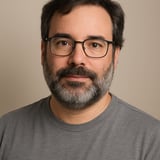Summary
Keeping large content repositories organized is an ongoing challenge. There's always new stuff coming in, and taxonomies evolve over time. Resource-strapped teams seldom have opportunities to re-categorize older content. It's a task well-suited for generative AI. Large language models have powerful capabilities that can help teams keep content organized at scale. Using LLMs in this capacity can lead to better user experiences and free team members to focus on more valuable efforts. This presentation explores two approaches for using LLMs to organize content at scale: 1) re-categorizing content using existing categories and 2) developing new categories from existing content. Both will be shown as proofs of concept alongside feasible next steps.
Key Insights
-
•
Maintaining organized large content repositories is often deprioritized despite evolving product portfolios, leading to reduced findability.
-
•
Search alone is insufficient for large repositories because users often lack context about what content exists.
-
•
Evolving taxonomies require periodic retagging of older content to keep it relevant and findable.
-
•
AI, specifically large language models like GPT-4, can automate taxonomy maintenance tasks significantly faster than humans.
-
•
Human oversight is critical to review AI-suggested tags to prevent hallucinations and ensure quality.
-
•
Developing new taxonomies requires analyzing content holistically, which exceeds typical LLM context windows.
-
•
Embedding databases help chunk and relate content statistically for clustering similar topics at scale.
-
•
Graph Retrieval Augmented Generation (Graph RAG) integrates knowledge graphs with LLMs to increase precision by leveraging semantic relationships.
-
•
RAG enables querying domain-specific content unseen by generic LLM training data, supporting bespoke AI assistants.
-
•
AI tools enable higher speed and new methods for content work but require new workflows and ongoing experimentation.
Notable Quotes
"Keeping large content repositories organized is an ongoing challenge that often gets deprioritized."
"Search alone doesn’t cut it, particularly when people don’t know what they’re looking for or lack context."
"If organizations don’t keep content organized, it becomes less usable and less useful over time."
"Large language models can help organize content faster and at much larger scale than people can."
"I used GPT-4 to retag 1,200 blog posts, reducing an estimated 10–12 hours of tedious manual work to about a third of that time."
"I made sure the LLM would only use terms from my predefined taxonomy, but it still introduced some of its own tags."
"Working with these tools requires new workflows and checkpoints to validate and tweak the AI's output."
"Graph RAG uses knowledge graphs instead of just plain text snippets, which really improves precision."
"I see these AI tools as augmenting human work, letting us focus on what matters most, not replacing humans."
"The best way to understand these technologies is to learn them hands-on, especially if your work involves language or taxonomies."
Or choose a question:
















More Videos

"Good design is good business."
Doug PowellClosing Keynote: Design at Scale
November 8, 2018

"Middle schoolers might ask you tough questions about release forms and how their data will be used."
Mila Kuznetsova Lucy DentonHow Lessons Learned from Our Youngest Users Can Help Us Evolve our Practices
March 9, 2022

"We created a Wizard of Oz smoke and mirrors prototype—a simple text message thread between a parent and this service—just to get enough buy-in."
Sarah GallimoreInspire Progress with Artifacts from the Future
November 18, 2022

"Field usability testing showed stakeholders immediately how much value UX can add by catching issues before deployment."
Lada Gorlenko Sharbani Dhar Sébastien Malo Rob Mitzel Ivana Ng Michal Anne RogondinoTheme 1: Discussion
January 8, 2024

"Who deals with chaos, ambiguity, and disruption best? It’s us, design operations humans."
Alnie FigueroaThe Future of Design Operations: Transforming Our Craft
September 10, 2025

"Driver modeling tells you which research initiatives matter most based on their impact on key outcome metrics."
Landon BarnesAre My Research Findings Actually Meaningful?
March 10, 2022

"When you’re talking, it’s easier to learn something new, but if you’re shy and don’t talk, you don’t learn anything."
Emily EagleCan't Rewind: Radio and Retail
June 3, 2019

"Re-platforming is transformative not just for the product but also for the people, teams, and organization."
Malini RaoLessons Learned from a 4-year Product Re-platforming Journey
June 9, 2021

"Accessibility isn’t just a checklist; it changes moment to moment for any individual."
Asia HoePartnering with Product: A Journey from Junior to Senior Design
November 29, 2023
















